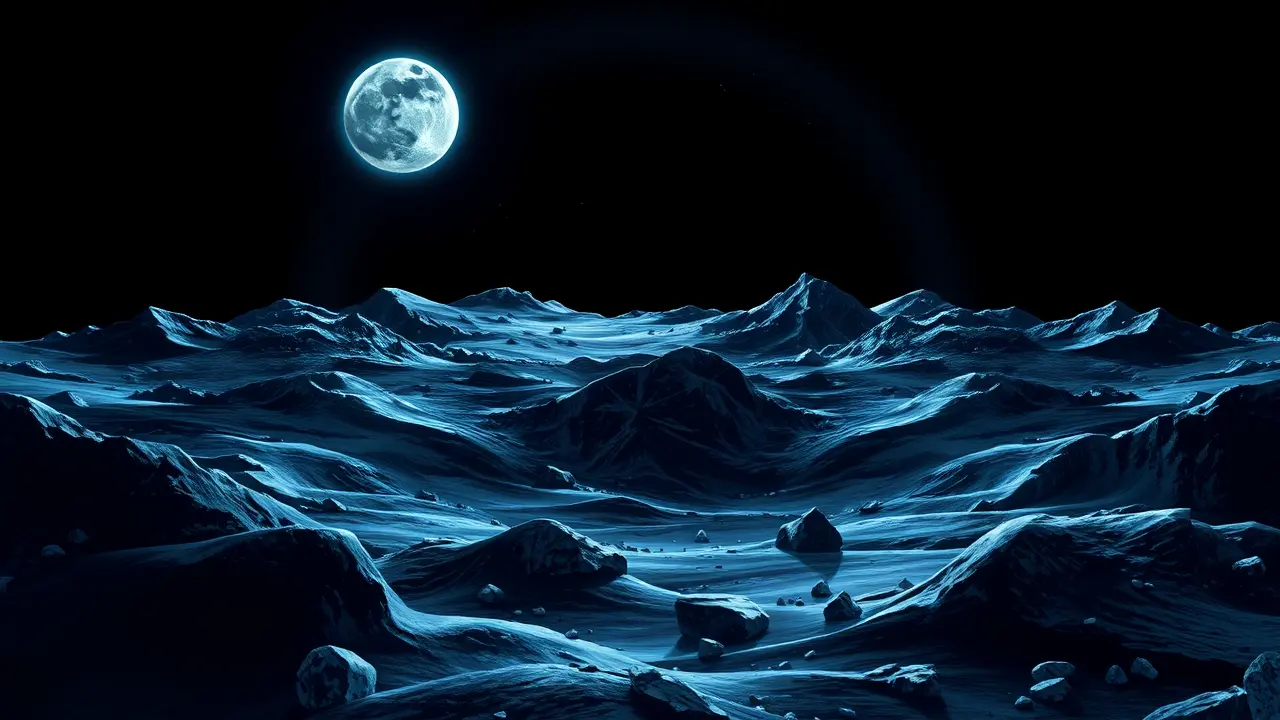The Moon’s south pole hides a 4-billion-year-old secret
The Moon’s south pole, that stark and shadowed realm now squarely in the crosshairs of NASA’s Artemis program, guards a secret dating back to the solar system’s most violent epoch. For decades, the lunar south polar region presented a confounding geological puzzle: a landscape of profound unevenness, a chaotic jumble of craters and elevated terrain that stood in stark contrast to the vast, relatively smooth maria on the Earth-facing side.The key to unlocking this mystery, it turns out, wasn't hidden at the pole itself, but lay billions of years in the past and thousands of miles away, in the form of a cataclysmic, glancing blow from the north. Recent research has fundamentally reshaped our understanding of the Moon’s most dramatic feature, the South Pole-Aitken (SPA) Basin.This colossal scar, the largest known impact crater in our entire solar system at roughly 1,600 miles in diameter, was long thought to be the result of a direct, head-on collision. However, sophisticated new computer models and a re-examination of gravitational and topographic data from missions like NASA’s GRAIL and the Lunar Reconnaissance Orbiter tell a far more dynamic and destructive story.The evidence now strongly suggests the SPA Basin was forged not by a straightforward impact, but by a planetesimal the size of a small world striking the Moon at an extremely oblique angle, a cosmic sideswipe of unimaginable force originating from a northern trajectory. This glancing impact was so violent and transformative that it didn't just excavate a hole; it effectively redistributed the Moon’s very mantle, sloshing deep-seated material from the lunar interior across the globe and piling much of it up in the southern polar region, creating the rugged, anomalous highlands we observe today.This geological sleight of hand explains the curious concentration of certain geochemical signatures. The material dredged up from the mantle by this impact was rich in what planetary scientists call KREEP—an acronym for rock enriched in Potassium (K), Rare-Earth Elements (REE), and Phosphorus (P).These elements are not just geological curiosities; they are potent drivers of volcanic activity because they contain radioactive isotopes that generate immense internal heat. This massive, impact-delivered dose of radioactive KREEP material to the Moon’s nearside is the most compelling explanation yet for why that hemisphere subsequently became a hotbed of volcanic activity, flooding with vast plains of basaltic lava to form the dark maria, while the farside remained a geologically quiet, crater-pocked highland.It was this single, ancient, off-center impact that effectively set the Moon’s geological fate, creating a fundamental hemispheric dichotomy that has persisted for over four billion years. The implications of this discovery are monumental for the future of lunar exploration.The Artemis missions, aiming to land astronauts at the south pole, are therefore not just visiting a site of water ice and perpetual shadow; they are poised to become the first field geologists on the remnants of this primordial cataclysm. The rocks and regolith there are not merely local samples; they are likely a jumbled archive containing material from the Moon’s deepest mantle, ejected and deposited by the SPA impact.Collecting these samples will be akin to holding a piece of the young Moon’s core-mantle boundary, offering unprecedented insights into the Moon’s internal structure, its thermal evolution, and the bombardment history of the early inner solar system. This isn't just about rewriting lunar history; it's about using the Moon as a calibrated time capsule to understand the processes that shaped all terrestrial planets, including our own. The violent birth of the SPA Basin, a pivotal event in our celestial neighborhood’s history, has been waiting patiently for a visitor, and humanity is finally preparing to knock on the door.
JA
Jamie Larson123k2 days ago
wait what so the whole side of the moon got rearranged from a cosmic sideswipe that's wild tbh
0
